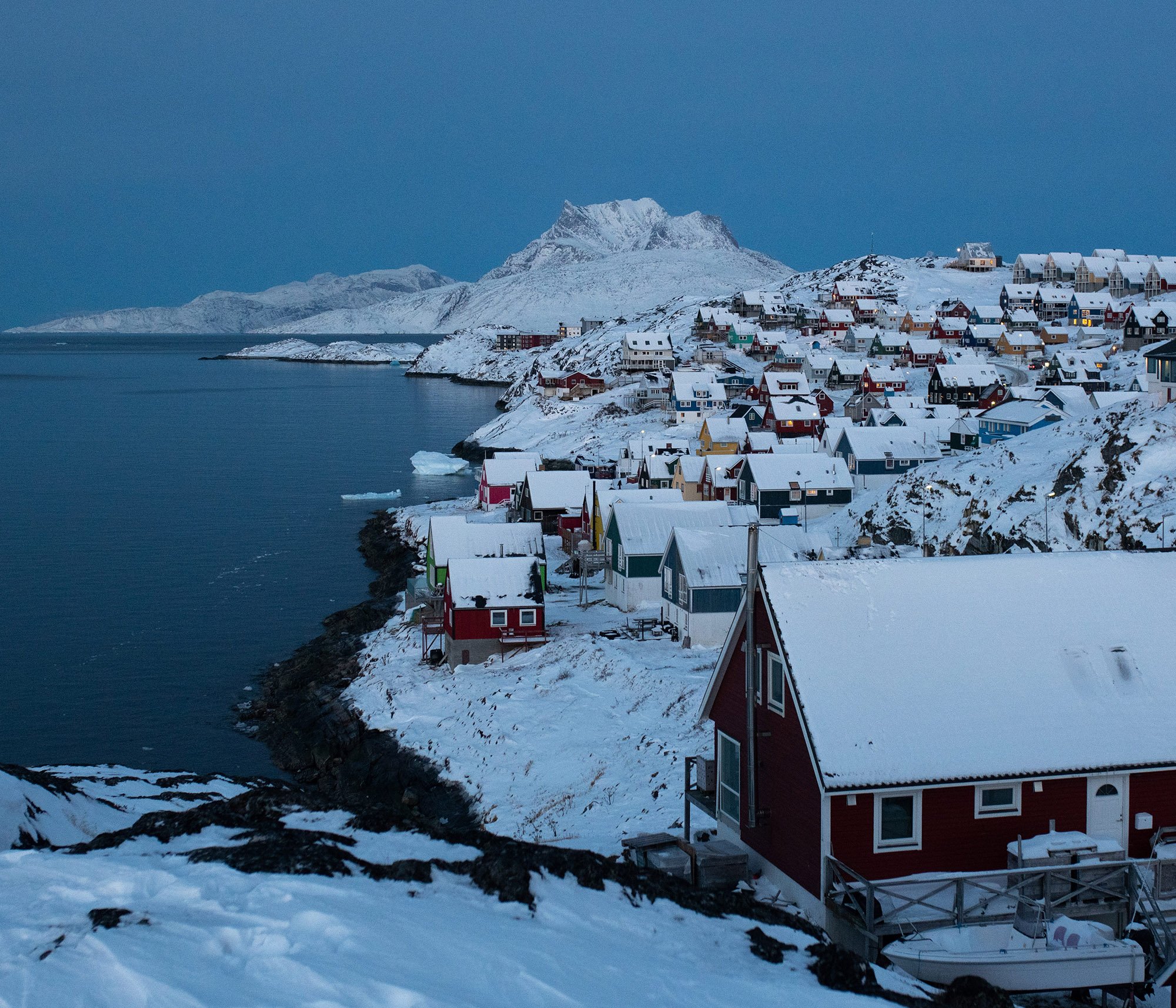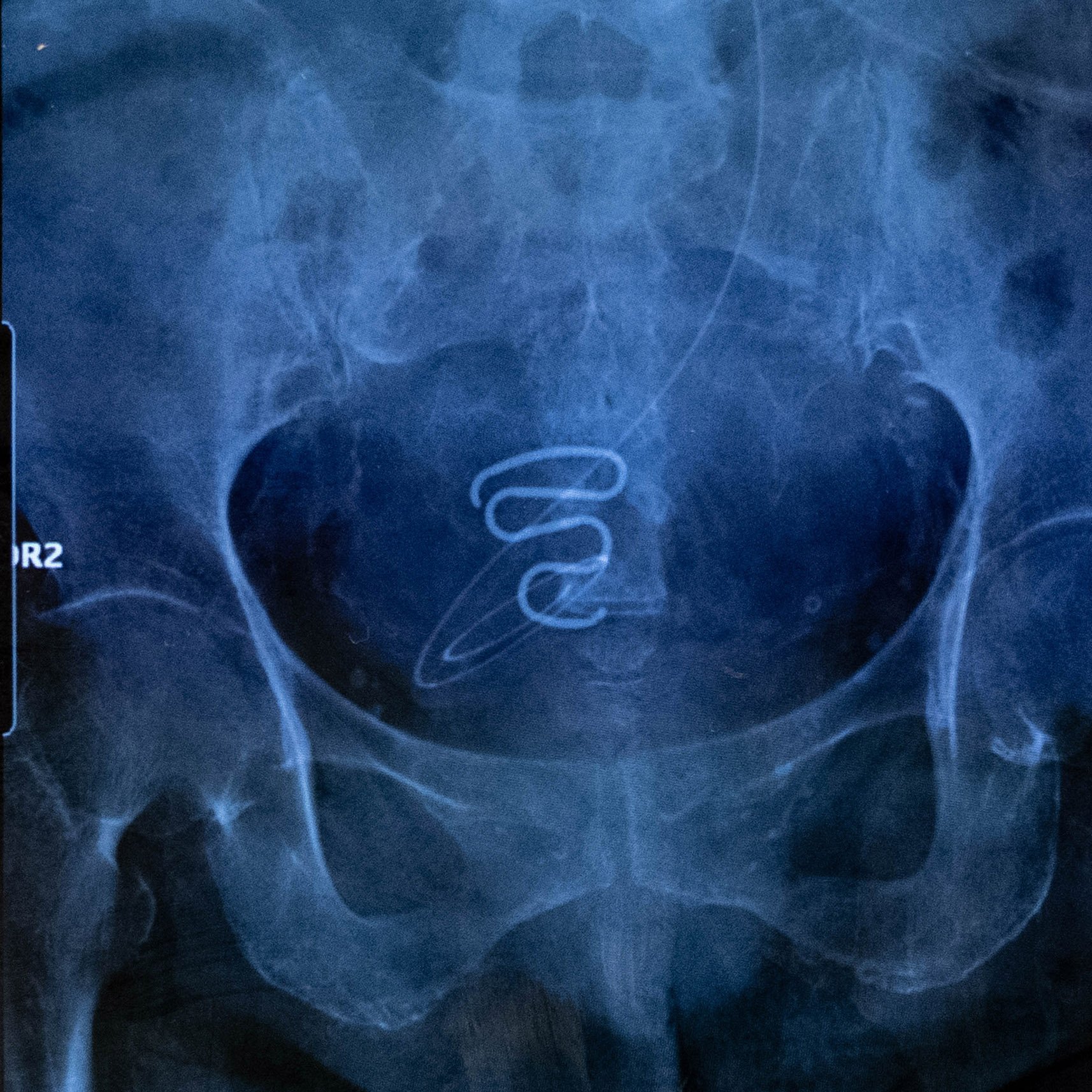Reckoning with Denmark’s Cruel Birth Control Campaign
For nearly a decade, the Danish government sought to control Greenland’s population by implanting IUD devices in Inuit girls, often without their consent.
JANUARY 9, 2024
Between 1966 and 1970, nearly 4,500 Inuit women, many of them teenagers, had IUDs inserted without their knowledge or consent. This campaign was carried out by Danish to limit Greenland's population growth and thus limit Danish subsidies. An official inquiry is underway to shed light on this period.
Nuuk (Greenland), November 2022. Nuuk, the capital of Greenland, is located on the west coast of the country. and has a population of 19,000. It is the home of Naya Lyberth, one of the first women to publicly talk about having been forcibly sterilized.
Nuuk, November 2022. X-ray showing an IUD, known in Danish as a “spiral”, used during Greenland's Spiralkampagnen sterilization campaign from 1966 to 1975. These IUDs were far too large and unsuitable for the bodies of young teenage girls. The youngest women fitted with the IUDS were only 12 years old at the time of insertion. In addition to pain and bleeding, these IUDs were also the cause of serious infections that rendered their victims permanently sterile
Nuuk, November 2022. Nuuk psychologist Naja Lyberth first discussed her case in 2019 in the local newspaper. She then brought together women by creating a Facebook group in 2022, following revelations about the existence of a Danish policy of forced contraception.
A photo of Naya Lyberth as a young teenager. She was only 13 years old when she and her classmates in Maniitsoq were forced to have an IUD. As her parents didn't know, she went straight back to school. “When I had the 'spiral', it was like stab wounds inside me and it was so painful.”
Nuuk, November 2022. A statue of Sassuma Arnaa, goddess of the sea in Inuit mythology. She is the main heroine of an Inuit legend about the creation of the ocean, a story which highlights respect for women.
Nuuk, November 2022. Young people having fun in front of apartment blocks. Although the birth rate is gradually rising, it was halved in the years following the Spiralkampagnen. Today, there are fewer young people in the workforce than in the older generation.
Uummannaq, November 2022. Uummannaq means “heart-shaped mountain.” The sterilization campaign there was very violent, driven by a doctor who adhered closely to the policy. 7th graders, aged 12-13, were sent directly to hospital by the school nurse. Girls had to line up in turn to receive an IUD. One of the girls rebelled and eventually managed to escape having an IUD implanted—a rare occurance at the time.
Nuuk, November 26, 2022. In 1973, Holga Platuu, like other girls aged 13 and 14, lived at Maniitsoq secondary boarding school. All had to go to hospital to have an IUD inserted. Their parents were not informed. Holga subsequently suffered complications and infections. Although the coil was removed, she became sterile. A few years later, she underwent a hysterectomy. She has no proof, but strongly believes that this operation was the consequence of complications linked to the implantation of her IUD.
Nuuk, November 26, 2022. An aurora borealis in the sky over Nuuk.
Nuuk, November 2022. Holga Platuu and her classmates from Maniitsoq secondary boarding school, who were also victims of the forced sterilization campaign.
Nuuk, November 2022. Aviaja Siegstad is a gynecologist in Nuuk. In the 1990s, women would come to her office for infertility treatment. They didn't know they were carrying an IUD. It was then that the device was discovered. At the time, cases of infertility in women with IUDs were frequent. Siegstad and her colleagues thought it was the work of unscrupulous doctors, but had no idea that it was a political decision by Denmark. “For me, the political decision and the systematic use of contraception to reduce a population is a crime,” says Aviaja Siegstad.
A beach in Nuuk in November 2022.
Nuuk, November 2022. A Greenlandic medical journal, Nakorsanut, publishes a photo of a birth in Greenland dated February 1988. Nationwide implementation of Spiralkampagnen began in autumn 1967. By the end of 1970, almost half of all fertile women in Greenland, aged between 15 and 49, were wearing an IUD. The number of newborns dropped dramatically. In 1964, 1,674 women born in Greenland gave birth to a child. By 1972, this number had fallen to 770, then to 665 in 1974. Thereafter, the number of births slowly began to rise again.
An IUD currently used by adult women. There are also slimmer models for teenage girls. The shape, size and materials used are different from the IUDs of the 1970s.
Greenland, November 2022. Icebergs in Disko Bay. Before evidence of a wider campaign was revealed in spring 2022, it was thought that these IUDs were laid by doctors with dubious methods, who acted in isolation in the north of the country—places like Uummannaq or Maniitsoq for example. No one suspected that this was a sterilization campaign ordered by the Danish government.
Greenland, November 2022. Mimi Karlsen is Greenland's Minister of Health. The Greenlandic parliament has passed a resolution to require the Danish government to open an inquiry into the contraceptive practices of the Danish health authority between the mid-1960s and 1991. The inquiry began in October 2022 and will run until the end of 2024.
“When I heard about the forced sterilization campaign, I looked at what had happened in my own family. My sister and sisters-in-law are five years younger than me and have never had children. For the first time, I talked to them about it and they told me they had an IUD.”
Nuuk, Greenland, November 2022. The old Nuuk hospital, in operation until 1967. In Nuuk, there are relatively fewer victims of the sterilization campaign than one would expect for the number of inhabitants. Gynecologist Aviaja Siegstad believes this is certainly due to the local population. Doctors in the town must have put up more resistance to the sterilization policy.
This is a translation of the photo essay originally published in French in Mediapart in February 2023.





















